Why We Use Temporary Drops for Winter Installation
We know the wait for fiber internet installation can be tough. After all, you are on the verge of having super-fast, reliable fiber internet from Pulse, and all the best streaming entertainment the web has to offer (not to mention crystal clear Voice service!).
Winter adds to the technical challenges of fiber installation. Frozen grounds, shorter days with less sunlight, excessive moisture from melting snow drenching the soil—all of these issues and more can make it exceedingly difficult to bury and install fiber. It’s also a riskier time for our crew of technicians.
While permanent fiber installation may sometimes be delayed during winter and early spring, temporary drops can help deliver the high-speed internet you’ve been waiting for—even if you’ll have to wait for better, safer weather and ground conditions for final installation with buried fiber internet lines.
Here are answers to common questions about temporary drops. We want to explain our process of installing them so you’ll know what to expect.
What is exactly is a temporary drop?
A temporary drop, also referred to as a temp drop, is simply an above-ground fiber internet connection line that provides fiber internet service temporarily to your home or business until weather and ground conditions are feasible and safe enough to bury the fiber line in the ground.
What kinds of conditions necessitate temp drops?
There are two common reasons why Pulse may not be able to bury the fiber and complete installation during the winter and early spring.
1. The ground is frozen.
During winter and early spring, the colder temperatures can make the ground too hard to dig and bury fiber. And just because the temperatures warm up for a few days doesn’t necessarily mean the conditions are improved enough to complete the installation. In general, the ground must be fully thawed at least one foot deep, which can take weeks of 60 degree-plus temperatures, depending on the soil’s physical and chemical composition.
2. The ground is too wet.
The winter and spring can bring heavy precipitation, from heavy snows and snow melts to days of rain. When the soil is over-saturated, it is simply not feasible to install fiber optic lines below ground safely and effectively. Additionally, burying fiber when the ground is too wet can upset lawns, flowerbeds, trees, and other vegetation—not to mention upset your neighbors and their lawns, too!
What are the steps to installing a temporary drop?
After determining that the conditions do not support burying fiber, a temp drop is authorized. Our technicians will then connect the Multi-Port Service Terminal (MST) (i.e., the “box” near the street where internet service is supplied) to your home or business via a fiber line placed above-ground.
So instead of burying the fiber in the ground, the temp drop keeps the fiber line above the ground and connected to your home or business, temporarily, until the buried installation can occur when the weather and other conditions improve.
The line may run along your lawn and driveway, but don’t worry! Your car cannot damage the line. The fiber line may also cross over your neighbor’s property, but as with other utilities, there is a “right-of-way” that permits this if necessary.
Is the temp drop line safe?
Yes! While we don’t recommend you handle the line, it is not dangerous. Fiber technology consists of tiny glass strings that transmit light. So unlike live electrical wires, there is no risk of electric shock.
However, we suggest that you do your best to avoid the line while tending to yard work or clearing snow. Although the fiber lines are sturdy, snowplows and other equipment and tools can sometimes harm the line, necessitating more technical support—not to mention the inconvenience of losing internet!
When will you replace my temp drop?
When conditions permit, our team will return to your property to remove the temp drop and bury the permanent cables. Temp drops are replaced in the order that customers were installed; the temp drops that were placed first will be the first ones that get removed. You do not need to do anything to remind us of your temp drop; our crew keeps track and will be out to replace the temp drops as soon as they can.
We greatly appreciate your patience as we strive to provide you with fast, reliable fiber Internet, Voice, and TV as efficiently and quickly as possible! As always, feel free to reach out us with any questions or concerns you may have.

